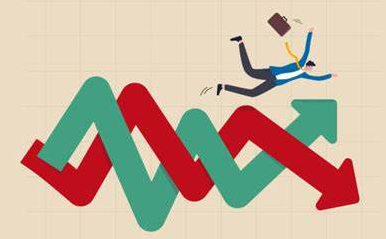Reflections on Seasonality During Periods of Volatility

The expression "Sell in May and stay away" originates from historical observations that many equity markets tend to underperform during the May-October period relative to the November-April months. In its simplest form, the adage cautions investors to consider reducing equity exposure as markets have, on average, been less robust during the warmer months. Some studies have shown that since 1990 the S&P 500 has delivered roughly 3% returns during May-October compared to around 6.3% in the winter months. Though that is generally the case, like most investment strategies, it's not perfect science.
However, recent market insights indicate that this seasonal pattern isn't as clear-cut today as it once might have been. Experts like Callum Thomas, head of research for Top Down Charts, point out that the phenomenon tends to be more pronounced in bear markets. As of now, with some major indices already trading down - as noted with U.S. indices dipping around 5-6% heading into May - the risks associated with the season could be elevated. In bull markets, even though the summer period might be bumpier, many stocks can still post gains, making a blanket "sell" decision potentially premature.
Modern dynamics add further complexity. Factors such as algorithmic trading, evolving investor behavior, and global economic events now play significant roles in dictating market performance regardless of the seasonal calendar. This means that while historical averages often point toward weaker returns in summer, there are many instances that defy the trend. Some contemporary research even suggests that if one automatically sells in May, they might miss out on significant gains over a prolonged, bullish cycle. Additionally, different asset classes or sectors may react differently. What works for equities may not hold for assets like cryptocurrencies, which have shown their own seasonal patterns, or commodities, espcially gold and silver, both of which tend to thrive in uncertain times.
In practical terms, this adage remains more a rule of thumb than a rigid strategy. For investors facing current market conditions with evident bearish signals, a cautious approach might be justified. However, rather than completely exiting the market, many opt for tactical adjustments, shifting into defensive stocks or bonds perhaps, to mitigate risks without forfeiting eventual participation in any recovery. Seasonality should be one part of a broader strategy that also considers fundamentals, economic forecasts, and one's individual risk tolerance.
 Passive investing is built on the idea of staying the course for the long haul, but even a well-structured, buy-and-hold plan can benefit from tactical adjustments when market volatility intensifies. Here are several strategies a passive investor might consider to navigate a potentially turbulent 5-6-month horizon:
Passive investing is built on the idea of staying the course for the long haul, but even a well-structured, buy-and-hold plan can benefit from tactical adjustments when market volatility intensifies. Here are several strategies a passive investor might consider to navigate a potentially turbulent 5-6-month horizon:
Diversify Your Asset Allocation
Instead of relying solely on broad market index funds, consider widening your exposure. By complementing your equity holdings with fixed income instruments, such as government or high-quality corporate bonds, you reduce overall portfolio volatility. Diversification across asset classes, sectors, and even geographies can help cushion the impact of short-term market swings. Some investors also favor low-volatility equity ETFs or dividend-oriented funds as defensive components during uncertain periods.
Periodic Rebalancing
Even a passive strategy can benefit from a disciplined rebalancing approach. When markets move, your portfolio's allocation can drift away from your risk tolerance. Rebalancing periodically (e.g., semi-annually) not only realigns your portfolio with your intended asset mix but also effectively "buys low and sells high" by capturing gains in overperforming areas and reinvesting in underperforming ones. This process, practiced during volatile periods, reinforces a disciplined long-term strategy without turning into active market-timing.
Maintain a Long-Term Perspective While Acknowledging Short-Term Adjustments
Volatility is a natural part of market cycles, and the current uncertain conditions might be more about temporary noise than permanent shifts. However, if short-term disruptions cause significant portfolio value changes, consider trimming positions in areas that carry higher risk and reallocating into more stable, defensive allocations. Avoid knee-jerk reactions by evaluating whether your short-term discomfort aligns with your long-term goals, a key strategy by which seasoned investors produce outsixed profits.
Consider a Tactical Overlay Without Losing Your Passive Core
Some passive investors explore tactical asset allocation strategies, which allow for minor shifts in portfolio construction in response to changing market conditions. For instance, you might modestly tilt your exposure toward lower-volatility assets or sectors that tend to perform better in turbulent environments (e.g., consumer staples or utilities) while keeping the bulk of the portfolio in broad index funds. This approach provides a buffer against volatility without abandoning the benefits of passive investing.
Leverage Dollar-Cost Averaging for Ongoing Contributions

If you're continuing to invest during this period, dollar-cost averaging can help mitigate the impact of unpredictable market swings. Consistently investing fixed amounts over time means you buy more shares when prices are low and fewer when prices are high, potentially lowering your average cost per share, even in choppy markets.
Each of these methods should ideally be considered in conjunction with your overall risk tolerance and long-term objectives. For example, if you're closer to retirement or have a lower risk appetite, shifting toward fixed income or defensively aligned ETFs can provide additional peace of mind. On the other hand, if you have a longer horizon, a modest rebalancing or tactical tilt might suffice without altering your core investment thesis.
Dividend-focused funds can play a key role in smoothing the ride through volatile markets by adding stability and generating a steady income stream. Here's how they help:
Income Generation and Lower Reliance on Capital Gains
Dividend-paying companies typically distribute a portion of their earnings as cash to shareholders. This regular income can act as a buffer during market downturns. When stock prices are declining, the dividend yield may increase, offsetting some of the losses from capital depreciation. Furthermore, reinvesting dividends over time can compound returns, which is especially valuable during volatile periods when market timing is challenging.
Characteristics of Financially Resilient Companies
Dividend-focused funds, particularly those tracking Dividend Aristocrats or high-quality dividend payers, often consist of established companies with strong balance sheets and stable earnings. These companies have demonstrated consistent dividend payments - and sometimes even increases- over many years. Their financial strength and reliable cash flows tend to translate into lower volatility compared to growth stocks that reinvest all their profits . This stability is one reason why such funds may be more resilient during market stress.
Sector Diversification and Defensive Positioning
Many dividend-paying companies belong to sectors that are inherently more defensive, such as utilities, consumer staples, or healthcare. These sectors tend to be less affected by economic cycles, which adds a layer of diversification and defensive positioning to a portfolio. For instance, funds like the Vanguard Utilities ETF or the Vanguard High Dividend Yield ETF offer exposure to companies that not only provide steady dividends but also help reduce overall portfolio volatility.
Improved Risk-Adjusted Returns
Investing in dividend-focused funds can help improve the risk-adjusted return of a portfolio. Because these funds provide a tangible return through dividends, they can offer better downside protection in volatile markets. Over time, the cumulative effect of dividend income can contribute significantly to total returns, even in markets where price appreciation is muted. This feature is particularly appealing when overall market conditions are turbulent, as it can help temper the swings of capital loss.
Here's a brief table summarizing potential dividend-focused ETFs and their characteristics that may help during market volatility:
| ETF |
Focus Area |
Expense Ratio |
Notable Benefit |
| SCHD (Schwab US Dividend Equity ETF) |
Broad exposure to quality dividend payers with a history of stable payouts |
~0.06% |
Low cost, steady income stream |
| VYM (Vanguard High Dividend Yield ETF) |
High-yielding dividend companies across sectors |
~0.06-0.07% |
Increased yield, potential downside cushion |
| VPU (Vanguard Utilities ETF) |
Defensive utilities secto |
~0.10% |
Sector stability, lower volatility |
| VNQ (Vanguard Real Estate ETF) |
Real estate investment trusts (REITs) with regular income |
~0.12% |
Diversification and income from a relatively stable asset class |
Each of these funds provides exposure to dividend-paying companies with different risk profiles, allowing investors to tailor their portfolio based on both their income needs and risk tolerance.
Planning Ahead
For the next 5-6 months, when uncertainty might keep markets choppy, incorporating dividend-focused funds into a predominantly passive strategy can help mitigate volatility. The key is to maintain a balance that supports your long-term objectives while providing an income cushion in the meantime. Whether it's through diversification into defensive sectors or capitalizing on the inherent stability of dividend aristocrats, these funds offer a pragmatic approach to weathering market swings.

 Passive investing is built on the idea of staying the course for the long haul, but even a well-structured, buy-and-hold plan can benefit from tactical adjustments when market volatility intensifies. Here are several strategies a passive investor might consider to navigate a potentially turbulent 5-6-month horizon:
Passive investing is built on the idea of staying the course for the long haul, but even a well-structured, buy-and-hold plan can benefit from tactical adjustments when market volatility intensifies. Here are several strategies a passive investor might consider to navigate a potentially turbulent 5-6-month horizon:
